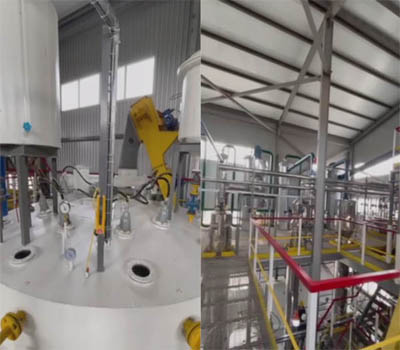Main processing steps of sunflower seed oil processing
Sunflower seed oil, as a kind of vegetable oil deeply loved by consumers, is highly regarded for its rich unsaturated fatty acids and vitamin E. In sunflower oil processing plant, the production process of sunflower oil mainly includes three key steps: pretreatment and prepressing of sunflower seeds, solvent extraction and oil refining. The following is a brief introduction to each step.

1. Pretreatment and prepressing of sunflower seeds
Before processing sunflower seed oil, it is necessary to pretreat sunflower seeds. This process includes cleaning impurities, shelling and adjusting moisture. Cleaning impurities can ensure the normal operation of processing equipment and improve the quality of refined oil. Shelling is to reduce impurity content and increase oil yield. Subsequently, the moisture and temperature of sunflower seeds were adjusted by steaming and frying, which laid a good foundation for the subsequent pressing process.
In the prepressing stage, the treated sunflower seeds will be sent to a press for preliminary pressing. This step is mainly to separate some oil from sunflower seeds and create conditions for subsequent solvent extraction. The pre-pressed sunflower seed cake contains high residual oil rate and needs further treatment.
1. Solvent extraction of sunflower seed oil
Solvent extraction is an important step to improve oil yield. In this process, the pre-pressed sunflower seed cake will contact with an organic solvent (such as hexane), and the solvent can effectively extract the residual oil from the cake. The extracted mixed liquid is called mixed oil, and crude oil can be obtained after evaporation and solvent recovery.
The solvent extraction process has the characteristics of high efficiency and economy, but the operating conditions need to be strictly controlled to ensure product safety and environmental protection.
3. The refining of sunflower seed oil
Crude oil obtained from solvent extraction process usually contains impurities, such as free fatty acids, phospholipids, pigments and odorous substances, so it needs to be refined. The refining section includes degumming, deacidification, decoloration and deodorization.
-Degumming: removing colloid such as phospholipids to prevent oil from deteriorating during storage.
-Deacidification: reducing the content of free fatty acids by alkali refining or physical methods to improve the stability of oil products. -Decolorization: use adsorbent to remove pigment, making the oil more clear and transparent.
-Deodorization: odor is removed by high-temperature steam treatment, which makes the refined oil more pure.
The refined sunflower seed oil is golden in color and fragrant in smell, which meets the edible standard and can be directly sold in the market.
The production process of sunflower seed oil involves many links, and each step plays a key role in the quality of the final product. In the sunflower oil processing plant, from raw material treatment to refining, it is necessary to strictly control the process parameters to ensure the production of high-quality sunflower oil. This healthy and nutritious vegetable oil has become one of the important choices in people’s daily diet.
